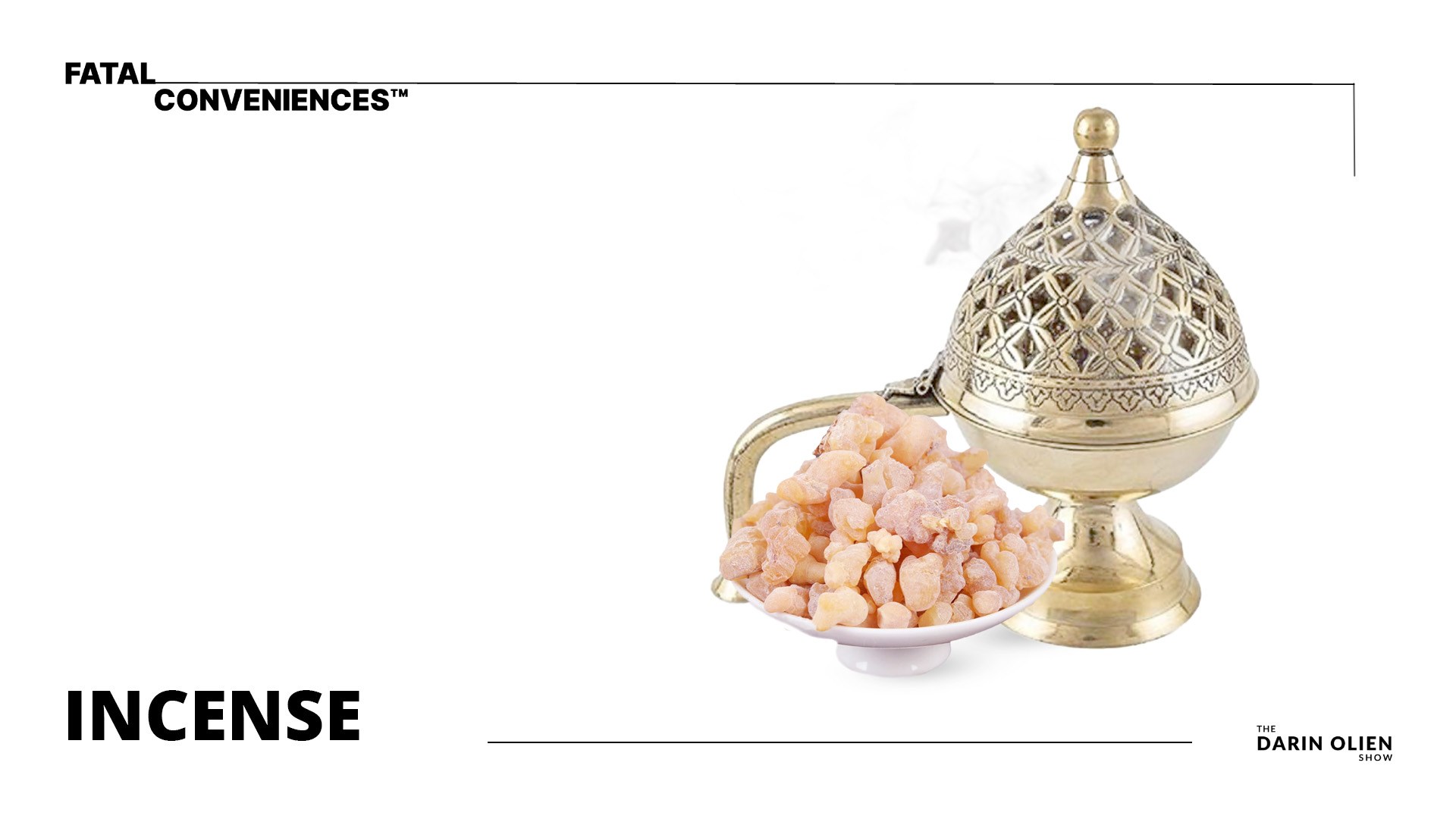01 Jun Incense | Fatal Conveniences™

Burning incense or resins has been a common practice among almost all ancient civilizations in the preservation of tombs, spiritual healing, and ceremonies. But…the commercialization of incense has led to incense no longer being what they once were…
Did you know, incense contains 35% fragrances…and you know what’s hiding under the fragrance label? Chemicals linked to cancer, hormonal imbalances, endocrine disruption, birth defects and reproductive problems.
Plus, burning incense can emit benzene, toluene and other volatile organic compounds deteriorating the environment.
This is only skimming the surface and why we’re about to explore the fatal convenience of incense.
Reliable Sources where you can learn more:
- https://kinobjects.com/blogs/news/comprehensive-guide-for-incense-beginners
- https://www.heddels.com/2018/12/incense-101-history-products/
- https://www.britannica.com/topic/incense
- https://www.healthline.com/health/what-is-incense#risks
- https://www.cancer.org.au/iheard/is-burning-incense-linked-to-respiratory-cancers
- https://www.who.int/europe/publications/i/item/9789289056533
- https://www.ncbi.nlm.nih.gov/pmc/articles/PMC2377255/
- https://www.nature.com/articles/s41598-020-63568-6
- https://www.ncbi.nlm.nih.gov/pmc/articles/PMC9058426/
BREAKDOWN
What we discuss:
03:55: What is the history of incense?
05:32: What are my favourite incenses?
06:01: Where does incense come from?
06:33: How are incense made?
07:56: What are the dangers of incense?
09:10: What can you use instead?
links
Find more from Darin:
Website: https://darinolien.com/
Instagram: https://www.instagram.com/Darinolien/
Down to Earth: https://darinolien.com/down-to-earth/
SPONSORS
Thank you to our sponsors:
Pre-Order the Fatal Conveniences book releasing May 16th: https://darinolien.com/fatal-conveniences-book/
I hope you enjoyed this episode of The Darin Olien Show! If you want to support or follow the podcast, here’s how:
Subscribe, rate or listen on Apple, Spotify, Stitcher
Follow my Instagram to keep updated on the podcast, weekly deep dives and other projects that I’m supporting (and the occasional Chaga appreciation post)
Sign up for my Weekly Email to keep up with what I’m tuned into.
For feedback or suggestions, email my team at [email protected]
Find the list of brands & products that get the big tick of approval from me here.
Comment below to join the discussion!
Podcast: Play in new window | Download
Subscribe: RSS




Vanessa Dawson
Posted at 09:37h, 09 JuneThanks for the info! What about the Palo Santo wood sticks? Do they typically add fragrance? I thought it was just the wood. Or sage? Isn’t it usually just the herb?